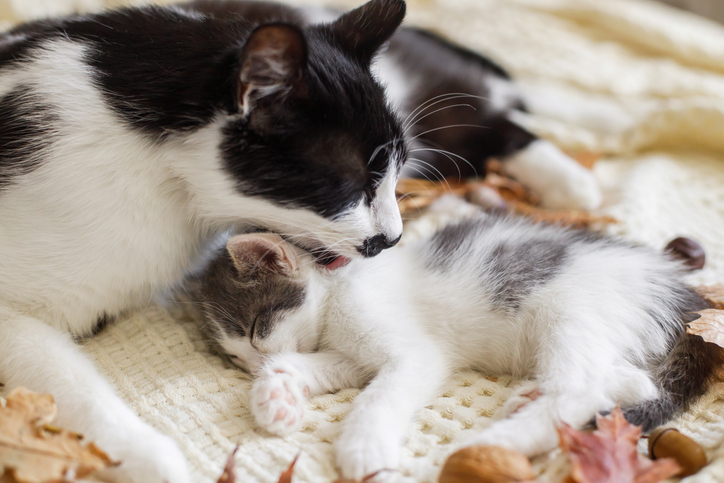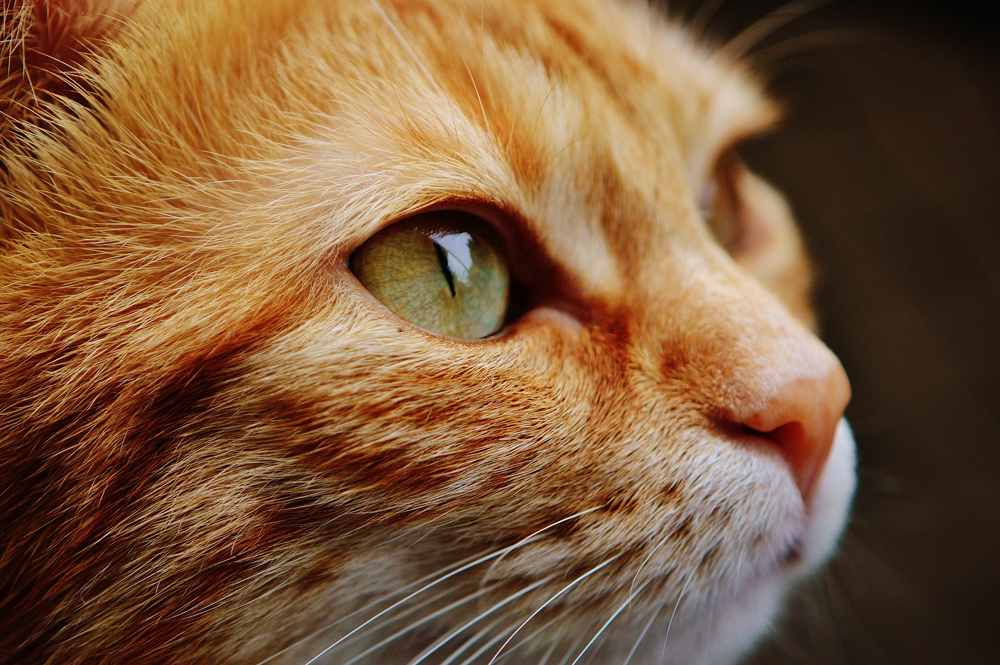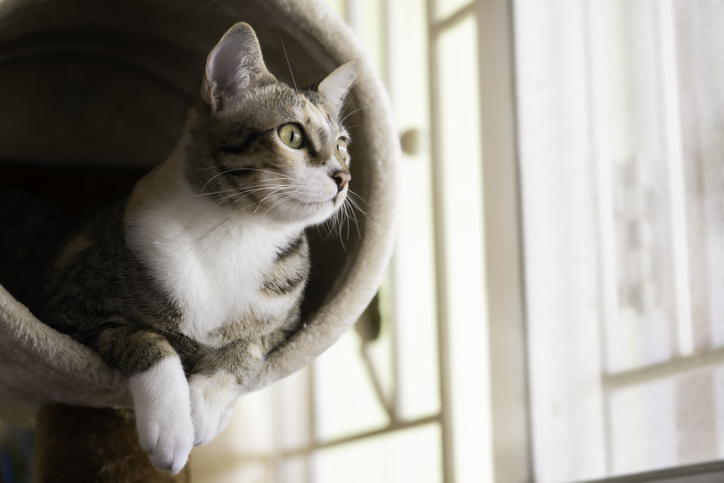
How to introduce a kitten to an older cat
7th October, 2021
While cats are very loving creatures to their humans, they can be very solitary animals. So some may struggle to accept an excitable ball of fluff arriving in their previously calm home. However, a bit of forward planning and some gentle introductions will give your feline friends the best chance of a successful life together. Read our handy step-by-step guide and get them both off to a great start!

When you bring your new kitten home, you’ll no doubt arrange insurance cover for them. If you haven’t already got older cat insurance then now’s a great time to do so. As cats age they often need an extra level of protection to keep them safe and well. Give our team of pet lovers a call and get your older cat protected in its senior years.
Step 1: Prepare early for your new arrival
Bringing a new kitten home for the first time is a very exciting event. But it can take a disastrous turn if you haven’t prepared beforehand. Rather than rushing immediately to introductions you’ll first want to get your home ready. You’ll need to keep both cats separate for a little while so they can both adjust to each other. The obvious way to do this is to create a separate, secure, kitten-proofed area for the new arrival.
When you’re putting together a new kitten shopping list make sure they both have their own toys, bed, bowls, scratching post, and litter box. Place each cats’ things in their own area so they won’t be upset by another kitty invading their space.
You know your older cat better than anyone. But it might be worth running a cat pheromone diffuser in the home for a couple of weeks before the kitten arrives. It could make your older cat feel happier and more relaxed about any changes.
Step 2: Use scent for first introductions
Animals such as cats get a huge amount of information from each other’s scent. So the best way to make initial introductions is through swapping smells. A good first step is to give each cat an old towel with the other’s scent on it. This will allow them to mix scents and feel like they are part of the same social group.
Then, when your older cat is not around, let the new kitten explore the home so they can feel comfortable with any new smells. Then swap them around and allow the older cat to wander around and smell the new kitten’s scent.
Step 3: Let them see each other!
Once the cats seem content around each other’s scent, it's time to move on to face-to-face contact! But rather than letting them both loose in a room together, it’s a good idea to still keep them physically separated. By using a stair gate or screen they can see each other, but only get as close as they feel comfortable.
Step 4: Allow them to mix in a calm situation
Once they seem happy to sniff noses or rub against the barrier then you can allow them to mix together when supervised. Never force interaction between your cat and kitten. And always make sure your older cat can get away if they need to.
Whatever happens, always be as calm and patient as possible! Remember your older cat is having to learn to share their territory and accept the new kitten. This isn’t easy as older cats may also be less tolerant. So, keep interactions short and sweet at first.

Step 5: Give treats and cuddles
On the subject of keeping things sweet, make sure there are plenty of strokes and treats on hand to encourage any positive interactions. More often than not an older cat won’t accept a kitten straight away and there may be some grumpiness. But if you give them time, reassurance, and some of their favourite treats they’ll soon adapt.
Kittens and older cats obviously have different nutritional needs so you’ll need to feed them different foods. If you arrange an older cat insurance policy from Petwise then there’s a contribution towards specialist senior cat food, too. Every little helps when it comes to cat care, particularly when you’ve taken on the expense of another feline!
Step 6: Keep a careful eye on body language
New kittens love to explore, but might not have learned the social niceties of living with another cat. This can lead to disagreements, as an older cat tries to establish a hierarchy with the new arrival. A bit of hissing or the occasional paw swat is nothing to worry about. However, always keep a close eye on both cat’s body language to make sure nothing more serious develops.
Even if they seem comfortable together, watch out for signs of stress and anxiety such as loss of appetite, hiding, vocalising, hostility or any unusual behaviour. An older cat might react to the kitten’s presence by sleeping in unusual places or not eating and drinking normally. However, if these changes continue it’s worth checking that there’s not something else wrong.
One of the best things about having older cat insurance in place is that professional help is always at hand and you won’t need to worry about the financial implications of an accident or injury.
Step 7: Stick to a routine to reduce stress
Cats dislike change and can become stressed or anxious if their environment changes too much. Help your old cat through this tricky time by keeping to a schedule for play time, feeding time and sleep time.
Remember, stress can lead to illness. If you’re concerned about your cat, speak to your vet.
Call Petwise for older cat insurance
When you welcome a new kitten into your family it can be all too easy for an older cat to feel left out. At Petwise, we work hard to ensure all cats can stay fit and healthy well into their senior years.
With a choice of cover levels, you’ll be sure to find one to suit your budget and requirements. Benefits include dental cover, farewell cover and a bereavement helpline.
Get a quick quote for older cat insurance today.
Policy benefits, features and discounts offered may very between insurance schemes or cover selected and are subject to underwriting criteria. Information contained within this article is accurate at the time of publishing but may be subject to change.